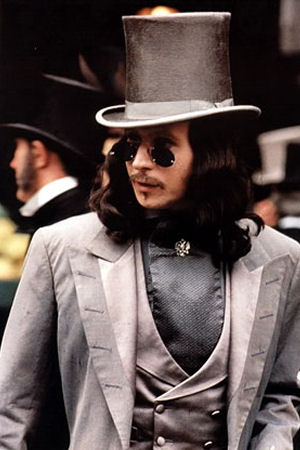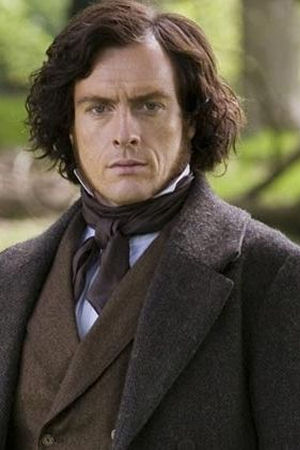Rispondi al commento
Untitled
PAPERISSIMA! Gli errori dei romanzi rosa
RFM: romance funniest mistakes
A new, tasty “finding” for our growing RFV collection ^_* !
If you find any mistake that you’d like to share with us, do not hesitate and send me a mail or a message through www.splinder.com with title + author of the books and description of the mistake, and I’ll post your RFM by giving you the credits.
But beware, do not waste your time with trivial mistakes such as misspelling of foreign fords etc. : we are looking for REAL mistakes – the equivalent of a Roman centurion with a Swatch at his wrist, okay ? No kidding with trifles girls, only blunders will do!
Attenzione però, lasciate perdere le banalità, ad esempio, parole straniere scritte con errori ortografici etc: cerchiamo i VERI errori, insomma l’equivalente di un centurione romano con lo Swatch al polso, chiaro ? Qui non si scherza, ragazze: si sbaglia sul serio !
SWEET, SWEET MIDDLE AGES…
In “Wild Wind” by Patricia Ryan, set in the
“The banquet’s fourteenth course, in honor of the new knights, was a giant warhorse sculpted of marzipan and spun sugar, which servants paraded between the rows of tables while myriad jugglers tossed lit torches into the air.” ( page 33 of the US edition ).
Unfortunately this banquet is just “a little bit” early… 200 or 300 years, more or less.
Marzipan and spun sugar are both based upon the same ingredient: sugar. But sugar cane in the Middle Ages was grown only by the Arabs, so that sugar was only discovered by western Europeans as a result of the Crusades -and the first Crusade was started in 1096, therefore after miss Ryan’s book events.
Crusaders returning home talked of this "new Oriental spice" and how pleasant it was. But at the beginning, given its expensive nature (it arrived in
The situation changed only 200 years later: Marco Polo mentions that
Well, let’s put things this way: life in the Middle Ages, with no sugar and no sweets, should have been really awful, but at least perhaps there was less need for dental treatments… ^_^
Fruit shapes molded from marzipan
Frutta di marzapane
QUANT’ERA DOLCE IL MEDIOEVO…
Nel romanzo “Wild Wind” di Patricia Ryan, edito in Italia come "Vento Selvaggio", n# 410 de "I Romanzi di Arnoldo Mondadori", ed ambientato in Normandia (Francia), 1073, leggiamo la descrizione di uno splendido banchetto:
“La quattordicesima portata del banchetto, in onore dei nuovi cavalieri, era la scultura di un gigantesco destriero fatta di marzapane e zucchero filato, che i servitori trasportarono trionfalmente tra le file dei tavoli, mentre miriadi di giocolieri lanciavano in aria torce accese.” ( pagina 33 dell’edizione americana – mia traduzione).
Sfortunatamente, questo banchetto è “leggermente” in anticipo sui tempi… 200 o 300 anni, più o meno.
Marzapane e zucchero filato, infatti, hanno entrambi lo stesso ingrediente base: lo zucchero. Ma la canna da zucchero nel Medioevo veniva coltivata soltanto dagli Arabi, cosicché lo zucchero venne introdotto nell’Europa Occidentale grazie alle Crociate – e la prima crociata iniziò nel 1096, pertanto dopo gli avvenimenti del libro della Ryan.
Al loro ritorno in patria, i Crociati parlarono di questa “nuova spezia orientale” e di quanto fosse piacevole al gusto. Ma inizialmente, visti i prezzi esorbitanti (arrivava in Europa grazie alle carovane provenienti dall’Oriente, dopo mesi e mesi di viaggio), lo zucchero era un prodotto esotico e di lusso, riservato quasi esclusivamente alla corte dei Re, veniva venduto in farmacia e si riteneva che avesse virtù medicamentose. Molti manuali medici scritti tra il 1200 ed il 1400 raccomandano lo zucchero come ricostituente per gli invalidi e come rimedio per l’impotenza (!). Quando veniva usato in cucina, lo zucchero veniva usato soltanto come una spezia, allo stesso modo dello zafferano, cioè in quantità minime e principalmente per la stagionatura e l’insaporimento delle carni.
La situazione cambiò soltanto 200 anni dopo. Marco Polo racconta che Venezia iniziò nel 1200 a importare zucchero dall’Oriente via nave, nel 1400 cominciò a raffinarlo sul posto, quindi lo zucchero divenne più facile da rintracciare in tutt’Italia. Allo stesso tempo, la canna da zucchero iniziò ad essere coltivata in Sicilia ed in Spagna: questo fece crollare il prezzo dello zucchero, e naturalmente, fece nascere l’arte della pasticceria moderna! ^_^
Be’, mettiamola così: vivere nel Medioevo, senza zucchero e senza dolci, doveva essere davvero una cosa tremenda, ma forse c’era un po’ meno bisogno di cure dentistiche…
















Commenti recenti
7 anni 18 settimane fa
7 anni 18 settimane fa
7 anni 18 settimane fa
7 anni 18 settimane fa
7 anni 18 settimane fa
7 anni 19 settimane fa
7 anni 19 settimane fa
7 anni 19 settimane fa
7 anni 19 settimane fa
7 anni 19 settimane fa